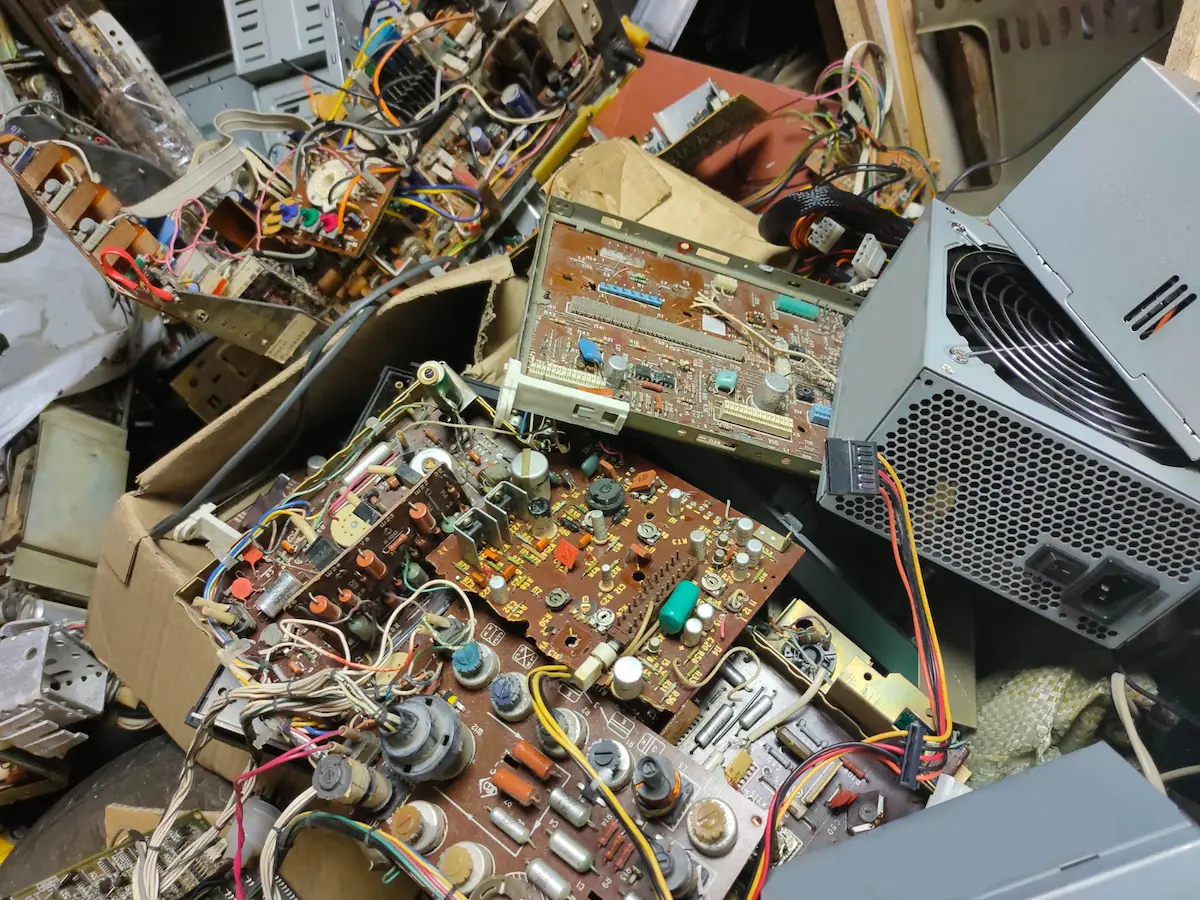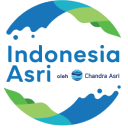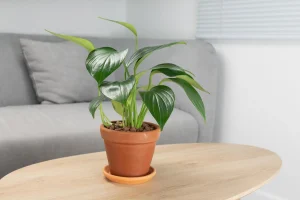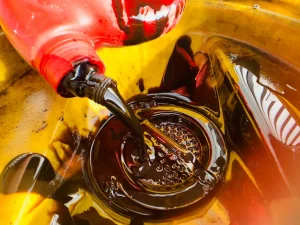Table of Contents
With technology development, the electronic trends are rapidly shifting. As a result, many people purchase the latest product and throw away their old ones, which later become electronic waste.
Electronic waste, or e-waste, is one of the wastes that can have adverse effects if not managed properly. The thing is, the amount of e-waste will probably continue to increase as technology accelerates, making it continue to accumulate.
This article discusses electronic waste, its types, and its impact on the environment. To learn more, read this article until the end!
What Is Electronic Waste?
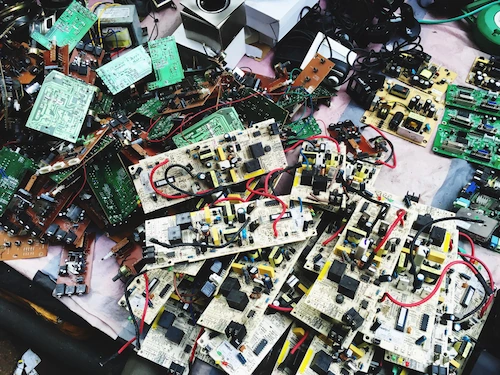
Electronic waste (e-waste) is waste coming from electronics and electric devices, such as hardware and assembly components, that have been thrown away and have no intention of being reused.
Annually, millions of electronics and electric devices are broken or outdated, ending up in landfills. These discarded devices will become electronic waste, and if not managed properly, it can pollute the environment and harm health. Several types of e-waste that you can find in landfills are as follows:
- Phone
- Computer
- Laptop
- Iron
- Television
- Monitor
- Tablet
- Electric rice cooker
- Vacuum cleaner
- Air conditioner
- Refrigerator
- Medical equipment.
- Camera
- Radio
- DVD player
- Battery
- Power socket
- Cable
- LED lamp
- Bulb
- Electronic workout equipment
- Game console
Those wastes are potentially scavenged, stored at the disposal warehouse, or illegally exported. Talking about e-waste, according to The Global E-Waste Monitor, Indonesia was the 9th out of 10 largest e-waste-producing countries in 2016, at 1.3 million metric tons.
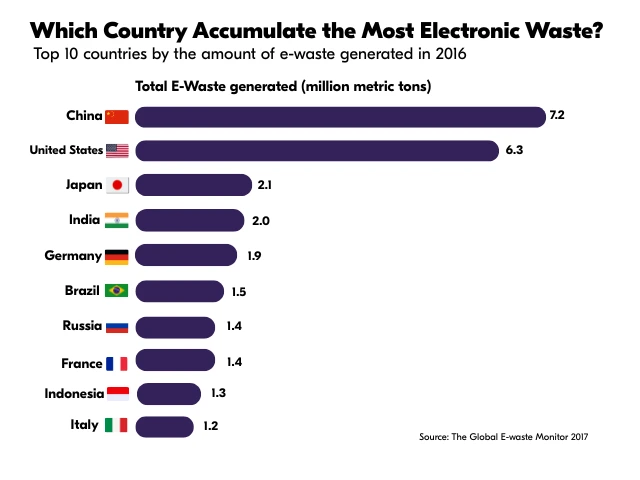
Moreover, the Minister of Forestry revealed that in 2021, electronic waste generation in Indonesia reached 2 million tons, and Java Island accounted for 56% of this amount.
These numbers showed that e-waste must be tackled by individuals, organizations, and the government to prevent it from accumulating and polluting the environment.
In Indonesia, e-waste is regulated in Government Law Number 27 of 2020 about Specific Waste Management. Under this regulation, e-waste is classified as dangerous waste and needs to be managed specifically, preventing it from harming the environment and humans.
Read also: How to Make Compost from Organic Waste, Easy and Fun!
Electronic Waste Impact on the Environment and Health
Electronic waste (e-waste) can contain bioaccumulative heavy metals or toxins, the impact of which can only be felt after many years.
Non-standardized e-waste management activities, such as dumping it into rivers, openly burning it, mixing it with other waste, or dousing it with acidic liquids, are also harmful to the body and the environment, as the process releases toxic pollutants.
Open burning e-waste can emit toxic smoke, and other activities can pollute the soil, water, and air. What makes it more concerning is that the residue on non-standardized electronic waste can threaten valuable communities, such as children, the elderly, and pregnant women. Generally, e-waste may contain some toxins as follows:
- Arsenic: Arsenic is a substance used in the electronics industry to produce semiconductors and transistors. Arsenic may be corrosive and can cause burns to the eyes and skin.
- Printed Circuit Board (PCB): PCB is used in capacitors, hydraulic systems, transformers, and other electronics. PCBs disposed of in landfills can leach toxic substances into the soil. When burned, PCBs can release hazardous volatile organic compounds (VOCs).
- Cadmium: Metal coatings and substances used to make batteries. These substances are highly toxic and can adversely affect human internal organs.
How to Dispose of Electronic Waste
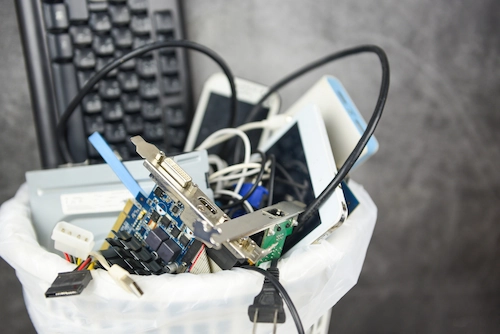
The regulation on electronic waste management in Indonesia is still under development until now by integrating the central government, local governments, electronic device manufacturers, business actors, and the community.
In Jakarta, the provincial government has encouraged e-waste management through “Electronic Waste Pick Up.” E-waste management in Indonesia must be done by parties who have permits from the Ministry of Forestry.
Additionally, you as an individual can make some efforts in disposing of the e-waste as follows:
1. Sorting Electronic Waste
The first tip is to sort e-waste by size and toxicity. Generally, e-waste contains mercury or lithium, so it requires different handling.
2. Separating E-Waste from Other Wastes
It is also not recommended to mix e-waste with inorganic and organic waste because these types of waste contain heavy metals that can pollute the environment. E-waste requires its own management, different from organic and inorganic waste.
3. Deposit E-Waste to the Authority
As mentioned before, electronic waste can only be processed by parties having permits from the Ministry of Forestry. Thus, you can look for the right recycler that can manage your waste.
Before depositing your e-waste with the authorities, you can sort it based on the chemical content and the type of electronic device. Then, you can deposit it in the waste bank in the area where you live. For example, if you live in Jakarta, you can contact the DKI Jakarta Environmental Agency.
Read also: Waste in Indonesia: A Statistics Everyone Should Know!
How to Reduce Electronic Waste
Aside from tips on depositing electronic waste, you must also know how to reduce it to prevent a bad impact on the environment. Here is how to reduce e-waste:
1. Sell Your Old Device
First, you can sell your electronics. The selling price may be lower than the market price and the previous purchase price, but you can reduce e-waste. As long as the device is still working, you will easily find buyers who need electronic devices at a low price.
2. Donate Your Electronics
If you think that your device is not appropriate for sale, you can donate it to your family member, friend, or people in need. Yet, make sure to factory reset your device to keep the data safe.
3. Rent an Electronic
Renting electronics can also reduce e-waste, especially if you only need the device for a short time. Instead of buying a new product and then abandoning it, it is better to rent it from a trusted provider.
That concludes the explanation about what is electronic waste. E-waste is a waste that pollutes the environment if it is not managed well. Thus, we must decrease this waste by making the efforts mentioned before.
Moreover, if you are interested in implementing a sustainable lifestyle and contributing more to the environment, you can join Indonesia Asri.
You can participate in the exciting challenges and programs, one of which is #SiPalingSustainable that can help you live an environmentally friendly lifestyle and create a greener environment.
Register yourself now and show your care for the environment with real actions.
Read also: Organic Waste Management in Schools, How to Do It?



